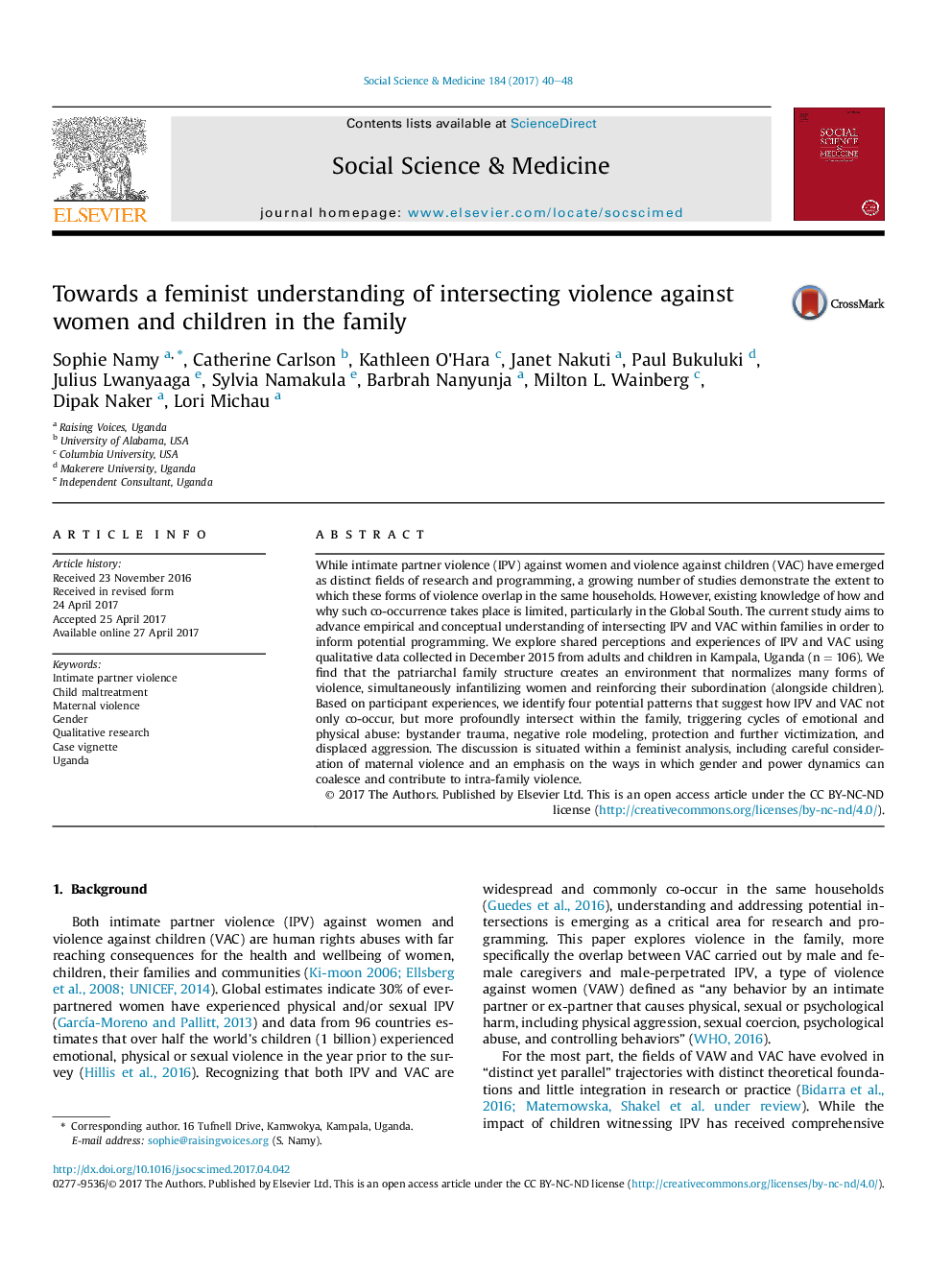| Article ID | Journal | Published Year | Pages | File Type |
|---|---|---|---|---|
| 5046483 | Social Science & Medicine | 2017 | 9 Pages |
â¢Unique focus on how and why IPV against women and VAC co-occurs in the family.â¢Contributes to a nuanced understanding of the normalization of IPV and VAC.â¢Qualitative findings explore four potential patterns of intersecting IPV-VAC.â¢Argues for a feminist analysis of IPV-VAC rooted in power dynamics and gender norms.
While intimate partner violence (IPV) against women and violence against children (VAC) have emerged as distinct fields of research and programming, a growing number of studies demonstrate the extent to which these forms of violence overlap in the same households. However, existing knowledge of how and why such co-occurrence takes place is limited, particularly in the Global South. The current study aims to advance empirical and conceptual understanding of intersecting IPV and VAC within families in order to inform potential programming. We explore shared perceptions and experiences of IPV and VAC using qualitative data collected in December 2015 from adults and children in Kampala, Uganda (n = 106). We find that the patriarchal family structure creates an environment that normalizes many forms of violence, simultaneously infantilizing women and reinforcing their subordination (alongside children). Based on participant experiences, we identify four potential patterns that suggest how IPV and VAC not only co-occur, but more profoundly intersect within the family, triggering cycles of emotional and physical abuse: bystander trauma, negative role modeling, protection and further victimization, and displaced aggression. The discussion is situated within a feminist analysis, including careful consideration of maternal violence and an emphasis on the ways in which gender and power dynamics can coalesce and contribute to intra-family violence.
